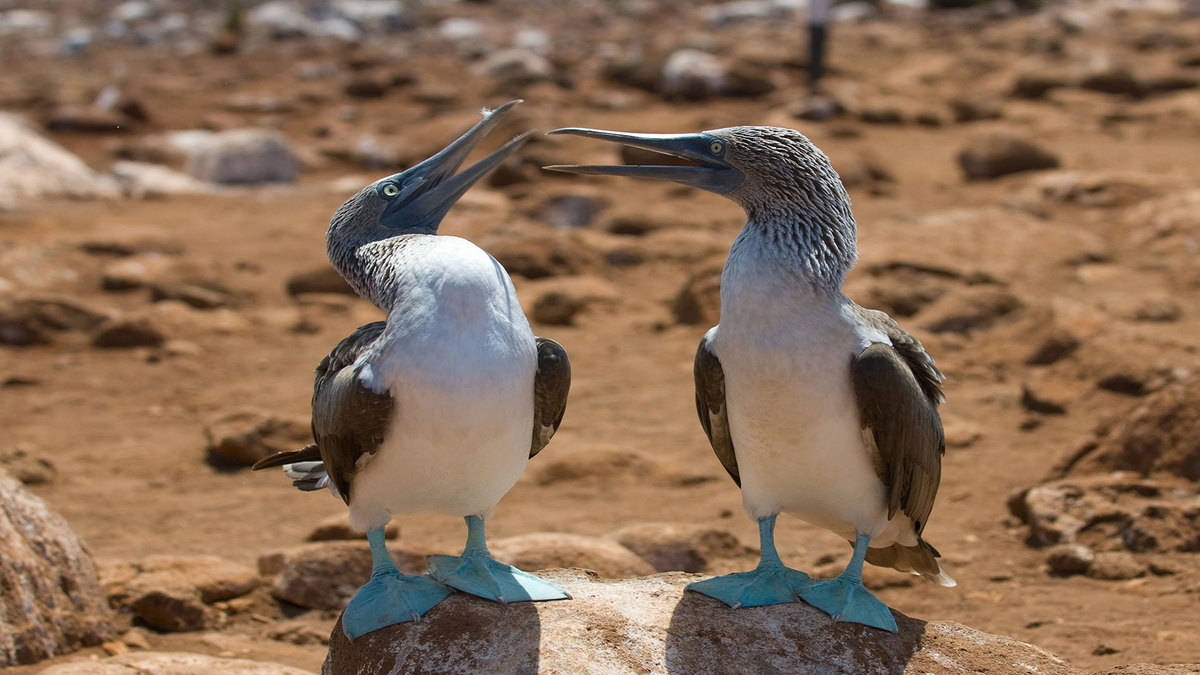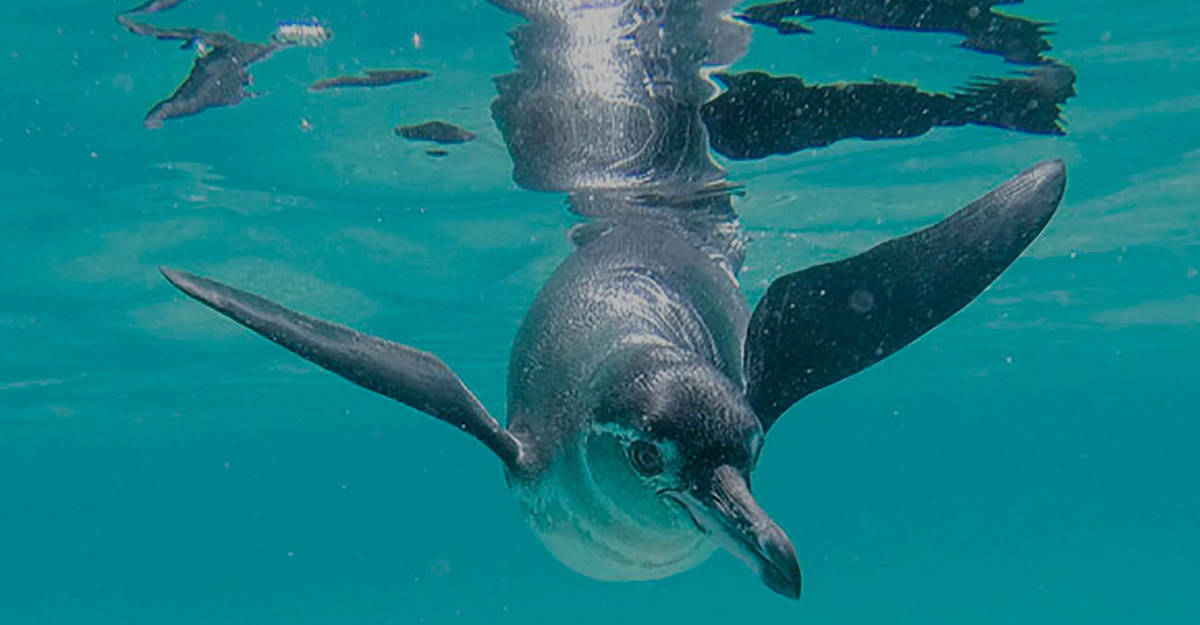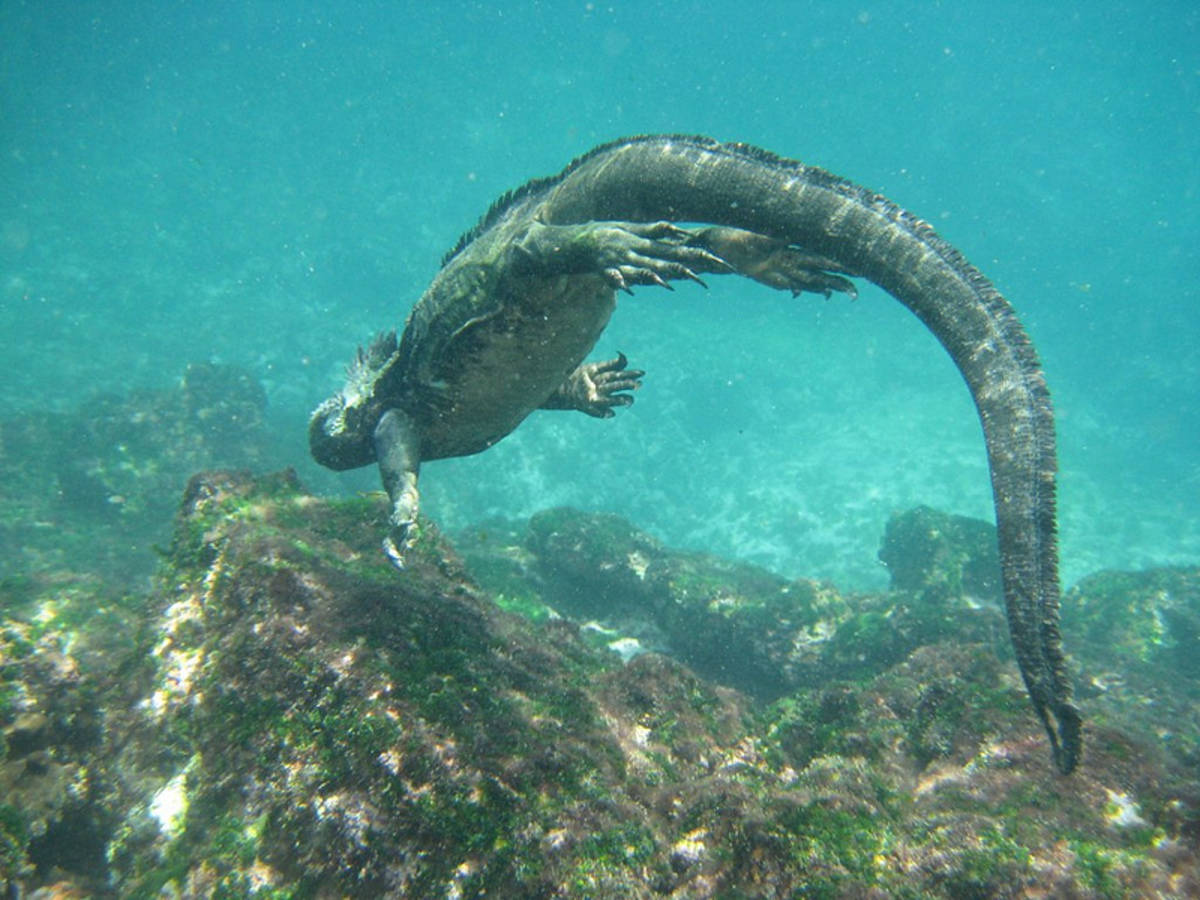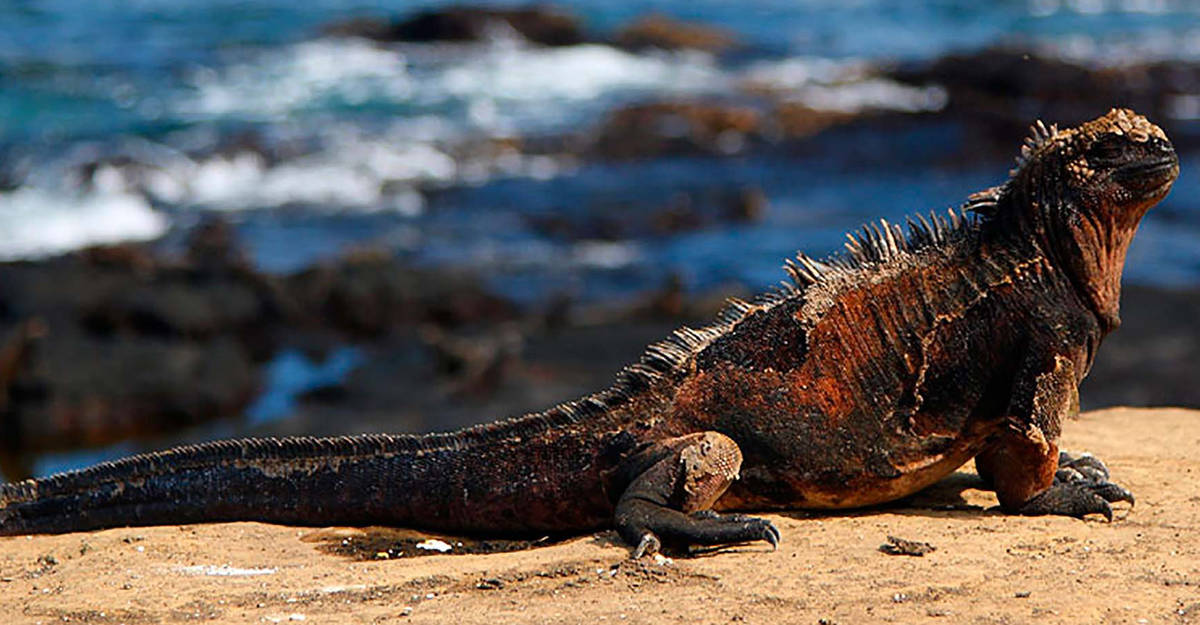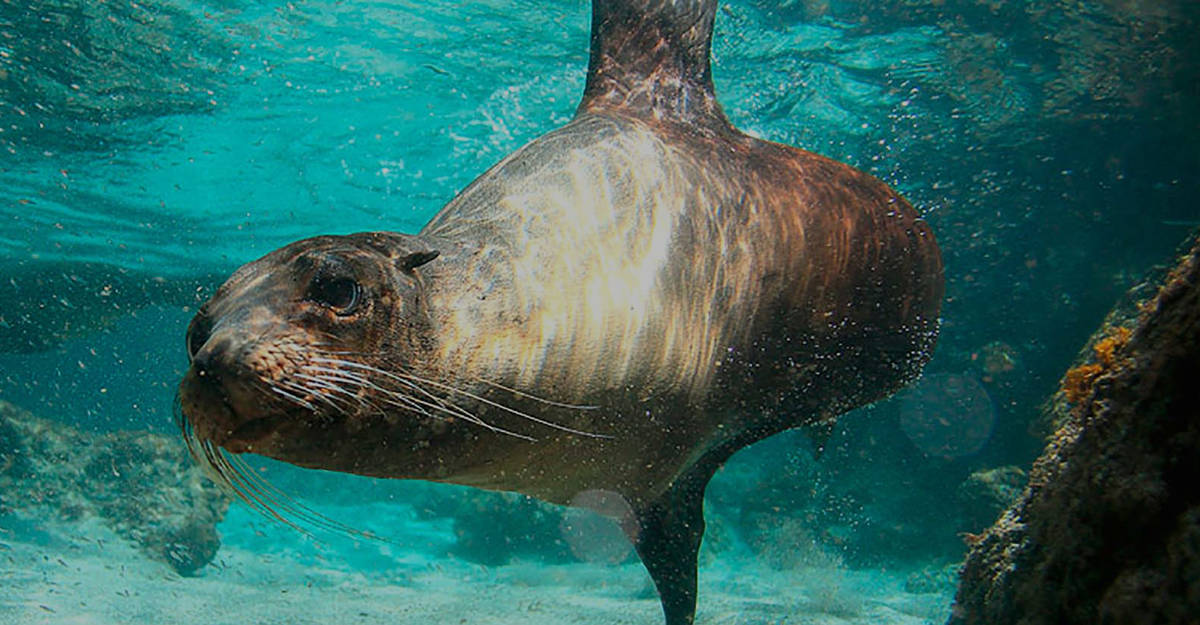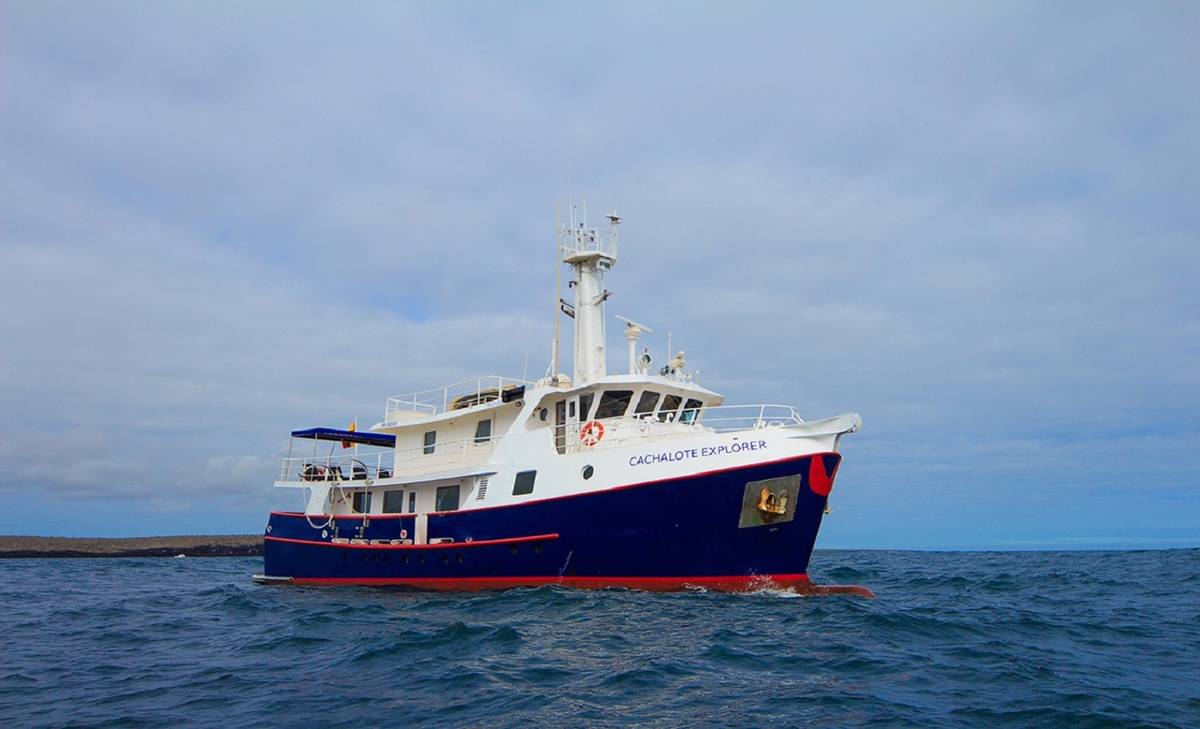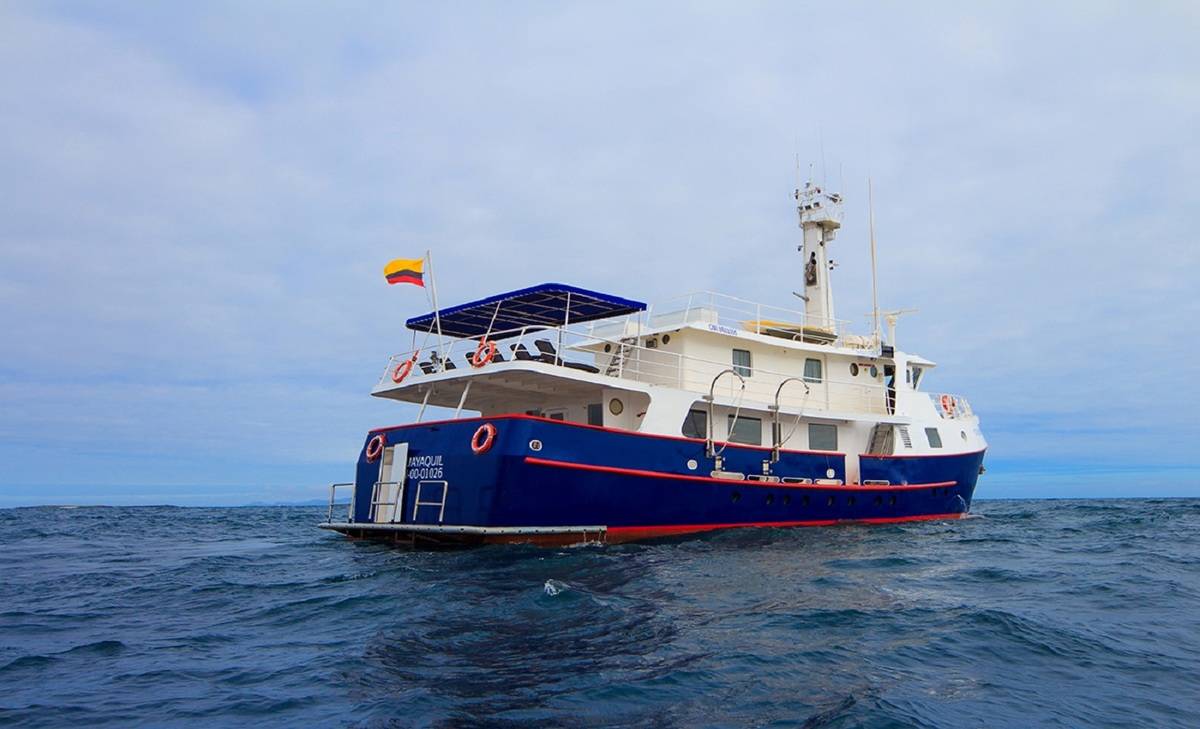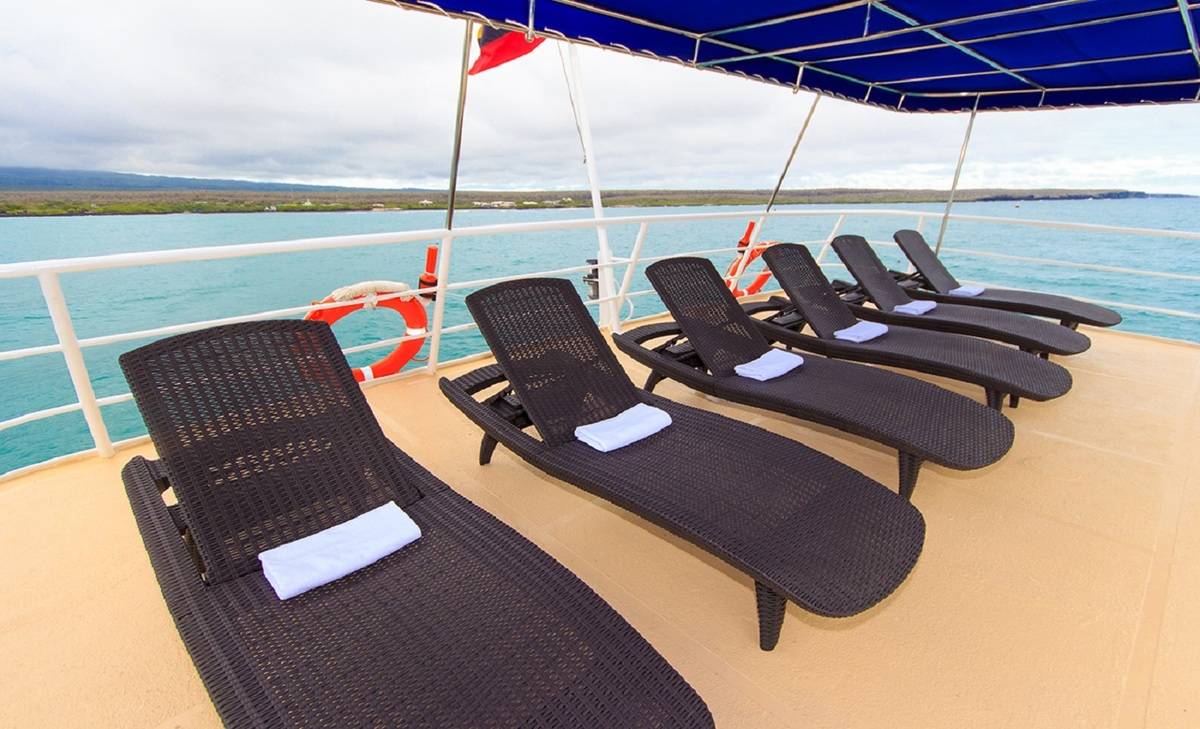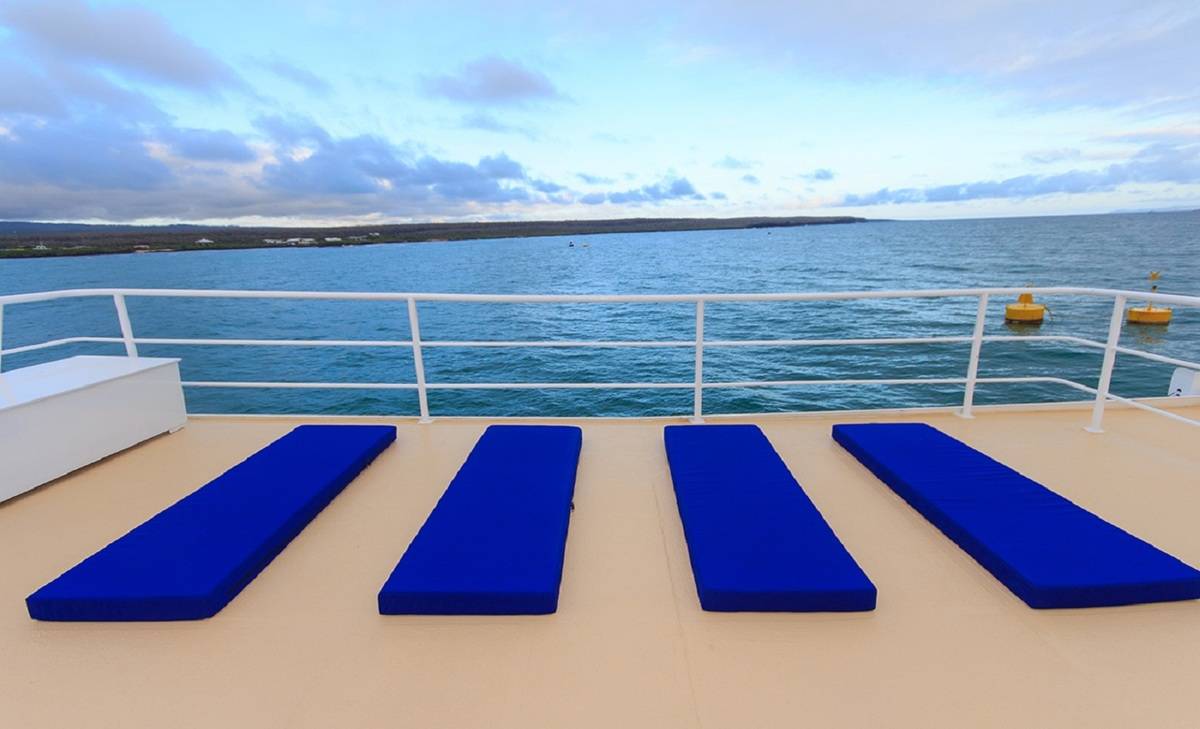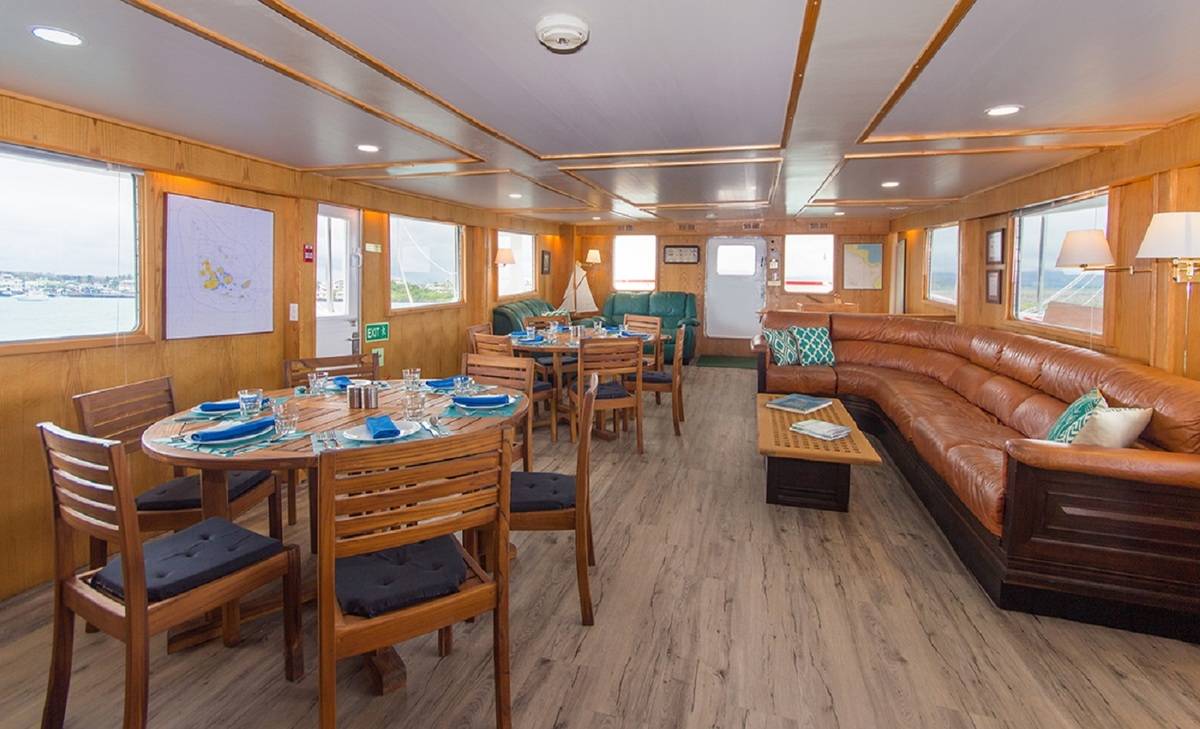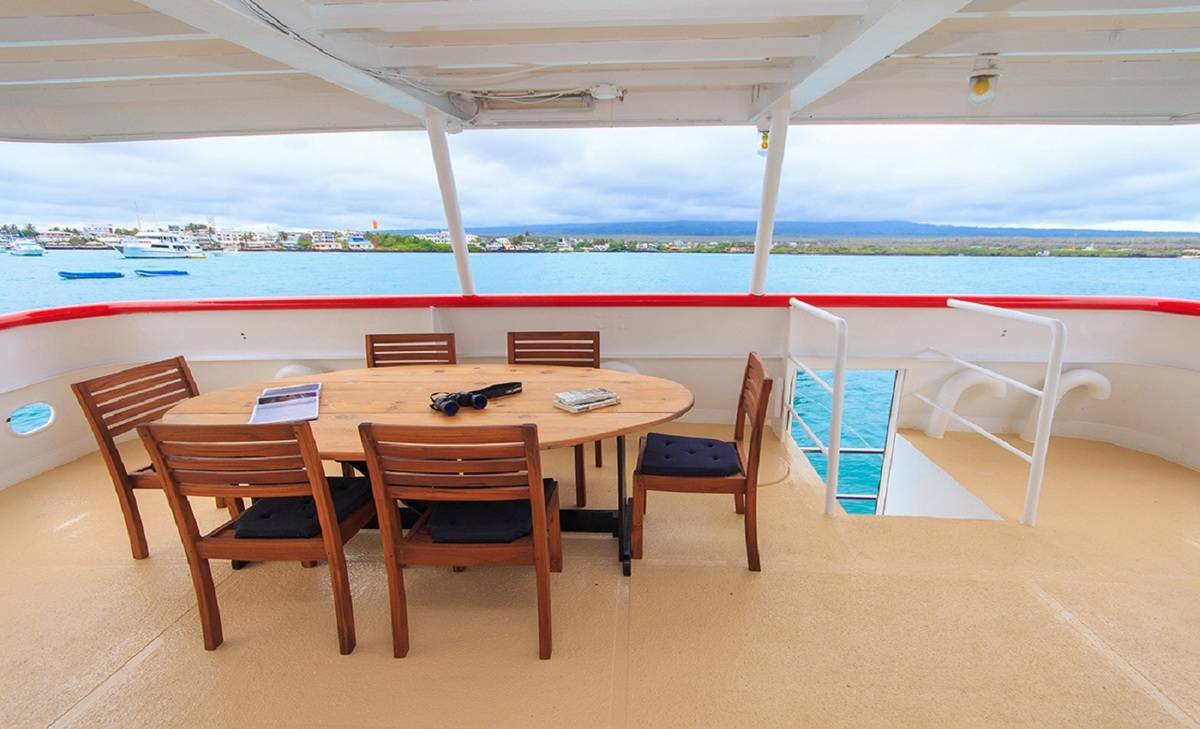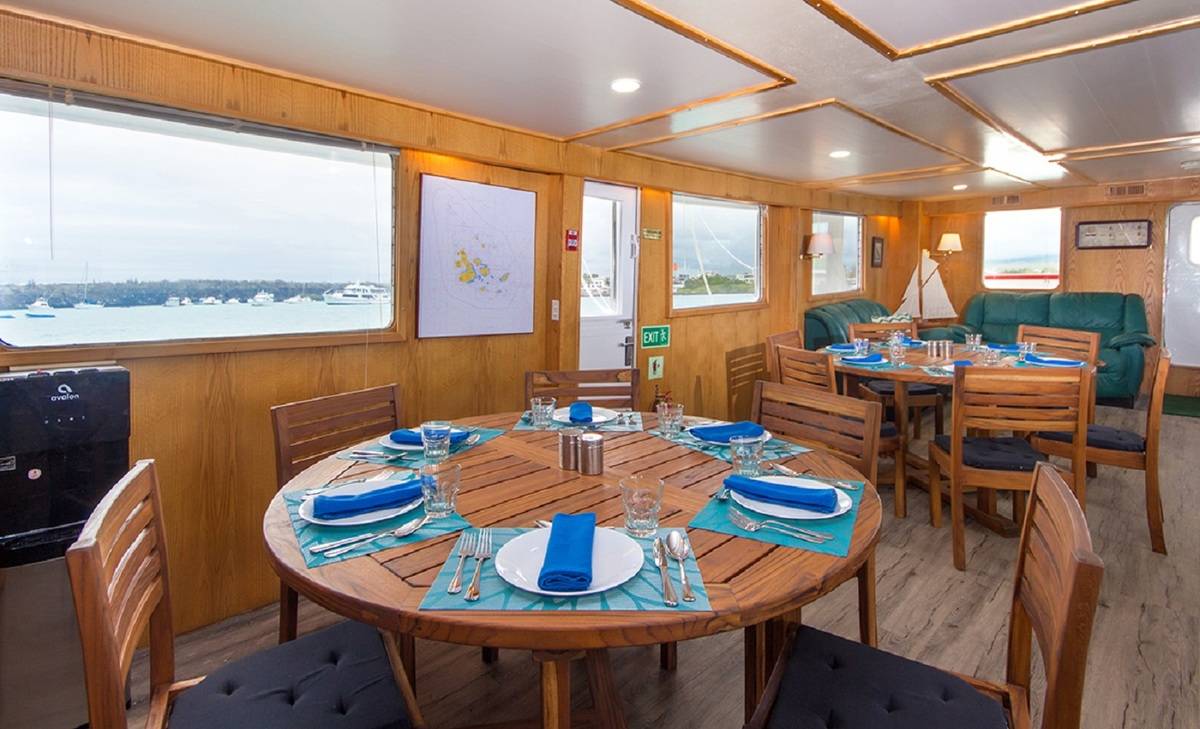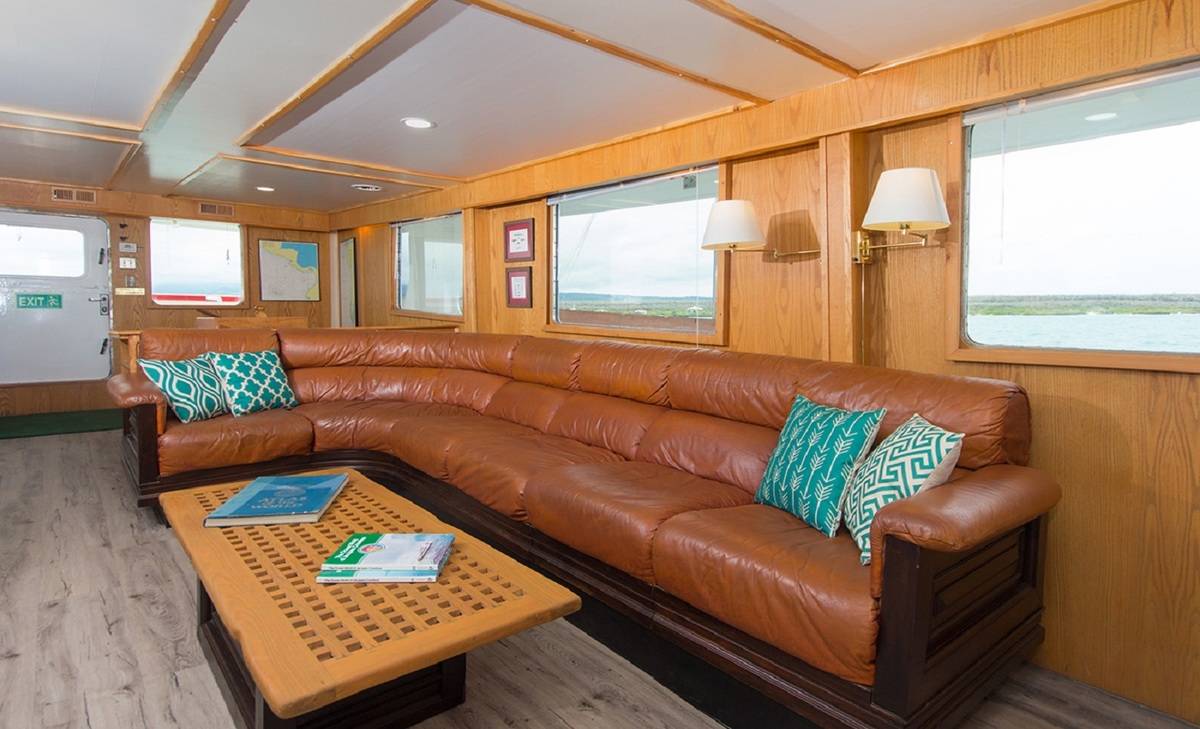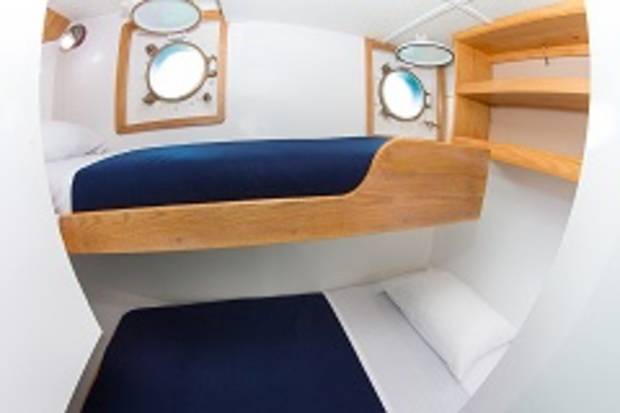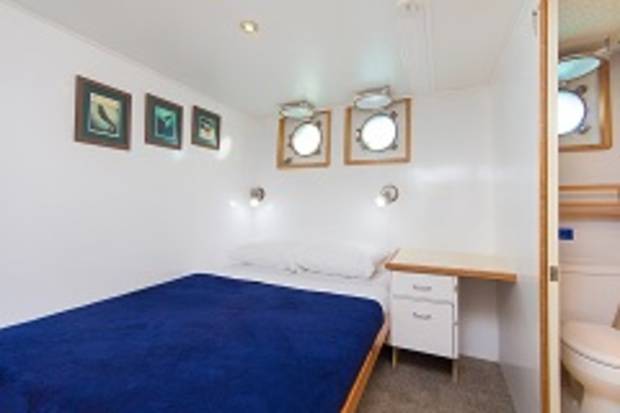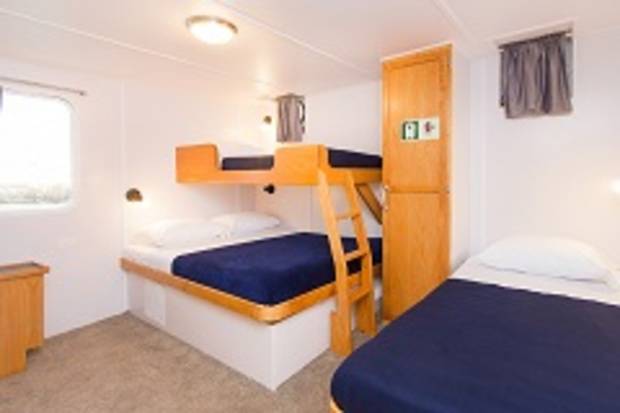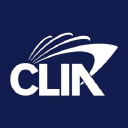'Fernandina'' Itinerary
8 Days - Cachalote Explorer
The itinerary for this Cachalote Explorer Galapagos Islands trip focuses on the Central and Western Islands, including visits to Western Isabela and Fernandina Island, two of the highlights of the Galapagos Islands.

Home » 8 Day Cachalote Explorer: ”Fernandina” Itinerary
Itinerary Highlights
- Enjoy breathtaking views of the islands from the highland.
- Encounter numerous native animal species in their natural environment.
- A walk uphill to Darwin’s Crater salt-water lake will provide an excellent view.
Itinerary in Brief
- Day 1: Arrive at Baltra Airport / Santa Cruz Island: Highlands of Santa Cruz and Charles Darwin Station
- Day 2:Sombrero Chino Island / Rábida Island
- Day 3: Isabela Island: Sierra Negra and Puerto Villamil
- Day 4: Isabela (Albemarle) Island: Punta Moreno and Elizabeth Bay
- Day 5: Isabela (Albemarle) Island: Urbina Bay and Tagus Cove
- Day 6: Fernandina Island: Punta Espinoza / Isabela Island: Punta Vicente Roca
- Day 7: James (Santiago) Island: Puerto Egas / Bartolome Island
- Day 8: North Seymour Island / Baltra for return flight to Quito
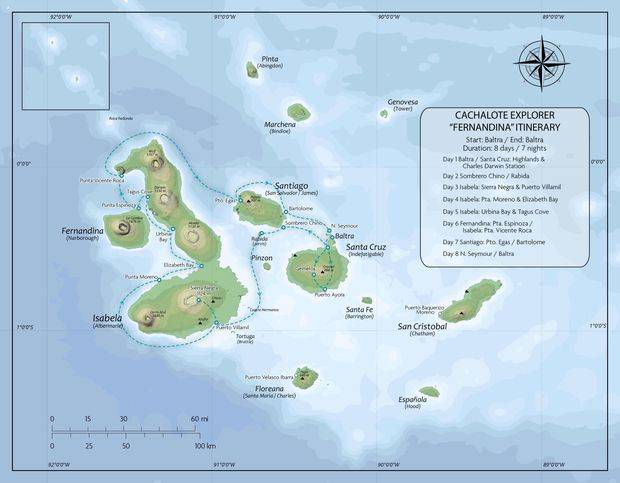
Day 1: Baltra / Santa Cruz: Highlands & Charles Darwin Station
Santa Cruz Island
Highlands of Santa Cruz: Galapagos giant tortoises can be seen in the wild in the highlands of Santa Cruz
Charles Darwin Station: Visit the Charles Darwin Station is a research facility and National Park Information center. The Charles Darwin Station has a giant tortoise and land iguana breeding program and interpretation center.
Day 2: Sombrero Chino / Rábida
Sombrero Chino: Sombrero Chino is a small volcanic island just off the southeast tip of Santiago. The name of the island describes the shape of the island. Fauna includes Sea lions, marine iguanas and the Galapagos penguin.
Rábida Island: Rábida is a small island with a dark red coral sand beach. Highlights include the lagoon with flamingoes, pelican nesting site, sea lion bachelor colony, and a snorkeling site at the end of the beach.
Day 3: Isabela: Sierra Negra & Puerto Villamil
Isabela Island (Albemarle): Isabela is the largest of the Galapagos Islands formed by five active volcanoes fused together. Wolf Volcano is the highest point in the entire Galapagos at 1707m.
Sierra Negra : Volcan Sierra Negra has a caldera with a diameter of 10km. View recent lava flows, moist highland vegetation, and parasitic cones.
Puerto Villamil: Puerto Villamil is a charming small town on a white sand beach. Highlights include the Tortoise Breeding Station and the flamingo lagoon. Other visits (depending on conditions) are the Tintoreras or Los Humedales.
Day 4: Isabela: Pta. Moreno & Elizabeth Bay
Punta Moreno: Punta Moreno is located in the central southwestern coast of Isabela Island. The site has spectacular views of volcanoes Alcedo, Sierra Negra and Cerro Azul. Some highlights include impressive lava flows, desolate and pristine landscape, varied and unusual arid zone vegetation.
Elizabeth Bay: This spot is only accessible by dinghy. It is possible to see penguins on the small islets in the bay. The end of the bay is long and narrow surrounded by three species of mangroves. Galapagos Sea Turtles and rays can usually be seen in the water.
Day 5: Isabela: Urbina Bay & Tagus Cove
Urbina Bay: Urbina Bay is located at the central-west coast of Isabela Island at the foothills of Alcedo and Darwin volcanoes. Highlights include the colourful land iguanas, Galapagos Giant tortoises and the coral uplifting from 1954.
Tagus Cove: Tagus Cove is a natural harbor where centuries ago whalers and pirates left their ship’s names painted or carved on the rocks. A walk uphill to Darwin’s Crater salt-water lake will provide an excellent view.
Day 6: Fernandina: Pta. Espinoza / Isabela: Pta. Vicente Roca
Fernandina Island: Fernandina is the youngest volcanic island and is still active.
Punta Espinoza: Punta Espinoza is a place famous for its large colonies of marine iguanas and as the habitat of unique species like the flightless cormorant, Galapagos penguin, Galapagos hawk, Galapagos snake, among others.
Isabela Island
Punta Vicente Roca: This site is visited by dinghy rides along the cliffs or the partially sunken cave at the water’s edge. Nasca boobies, blue-footed boobies and flightless cormorants inhabit the shoreline.
Day 7: Santiago: Pto. Egas / Bartolome
James (Santiago) Island: This Island is located between Isabela and Santa Cruz Islands. This Island offers a wide variety of seabirds, marine iguanas and fur seals.
Puerto Egas: A walk along the rocky coast line that will you show you a view of some of Galapagos’ best tide pools. Some highlights include: Sugar loaf volcano, fur seals, oystercatchers, marine iguana colony, and old salt mine
Bartolome Island: A hike will take you to the highest point on Bartolome for a spectacular view. Sea lions and penguins can be seen around Pinnacle Rock. There is a sandy beach with great swimming and snorkeling.
Day 8: N. Seymour / Baltra
North Seymour Island: This flat piece of land originated after an uplifting event thousands of years ago. The island is home to endemic Palo Santo trees, colonies of blue-footed boobies, swallow tailed gulls, and magnificent frigate birds.
Baltra: Return flight to Quito
Cabin Details
Cabin 8
Located on lower deck, lower double bed and upper single bed, private bathroom with hot/cold-water shower & air conditioning.
Cabin 3-7
Located on lower deck, private bathroom with hot/cold-water shower & air conditioning.
Cabin 3: lower double bed and upper single bed
Cabin 4: lower double bed and upper single bed
Cabin 5 & 6: queen bed
Cabin 7: lower double bed and upper single bed
Cabin 1-2
Located on upper deck, 3 beds (two lower double beds and one upper single bed or one lower double bed, one lower single bed and one upper single bed), private bathroom with hot/cold-water shower & air conditioning.
Cachalote Explorer Deckplan
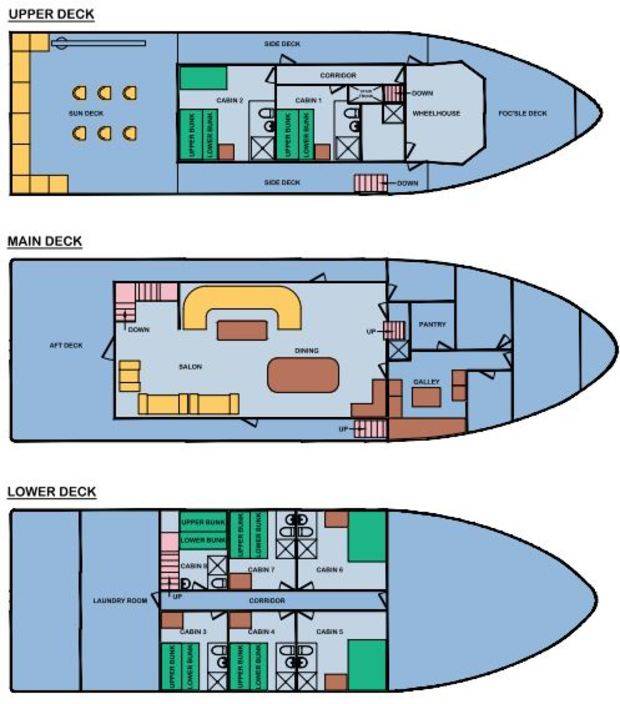
Specifications
- Category: Standard First-Class Motor Vessel
- Capacity: 16 passengers
- L.O.A: 88ft
- Beam: 24ft
- Salon Dimensions: 17.5ft x 35ft
- Type: Motor Vessel, Steel hull
- Mechanical Equipment: 1 main Caterpillar Engine, 3 Generators (110v), 2 reverse osmosis water makers, sewage treatment plant
- Safety Equipment: VHF (DSC) & HF (DSC) radios. EPIRB, SART, Hunter satellite tracking device, 2 GPS’s, 2 radars, depth sounder, flares, basic first aid kits, 2 tenders with outboards, fin keels for extra stability, flotation rings, life rafts with surplus capacity for all passengers and crew, fire alarm system.
- Guest Accommodation: 8 cabins each with private bath. Hot / cold water showers. Combination of Queen, Double and Twin sized mattresses.
- Crew: All crew are fully trained and certified. Captain, multilingual naturalist guide, cook, engineers, barman, and 4 sailors.
- Cruising speed: 8 knots (approx.)
Whats included?
- On-board accommodation
- All meals during voyage
- Scheduled excursions
- Services of experienced guide(s)
- Use of snorkel and kayaking equipment
- Welcome cocktail
What’s not included?
- International and internal airfares
- Arrival/departure taxes or reciprocity fees, visa fees where applicable
- Galapagos National Park entrance fee US$100 per person
- Transit control card US$20 per person
- Christmas & new-year surcharges
- Travel insurance
- Wet-suit rental
- Gratuities
- Any items not mentioned as included

